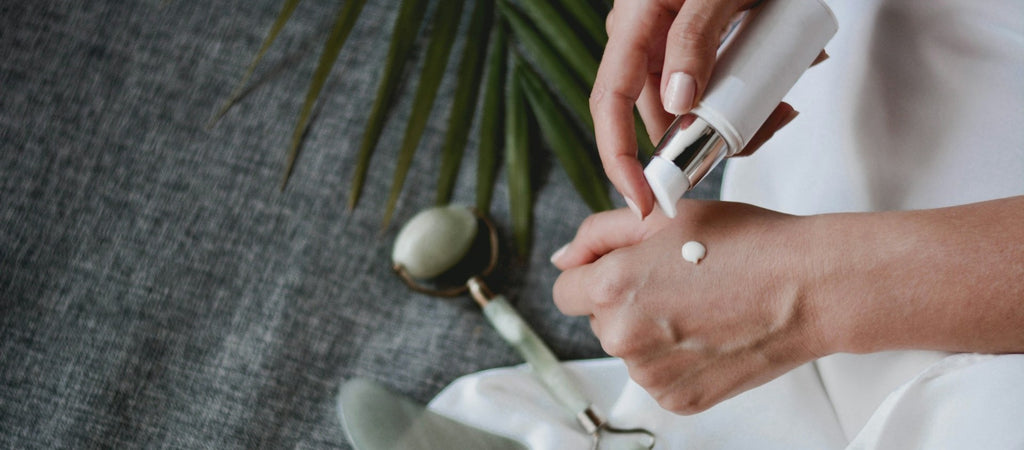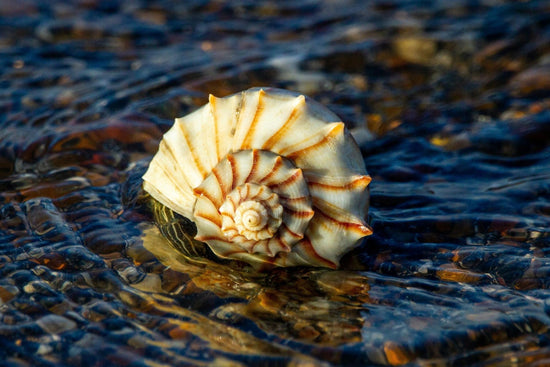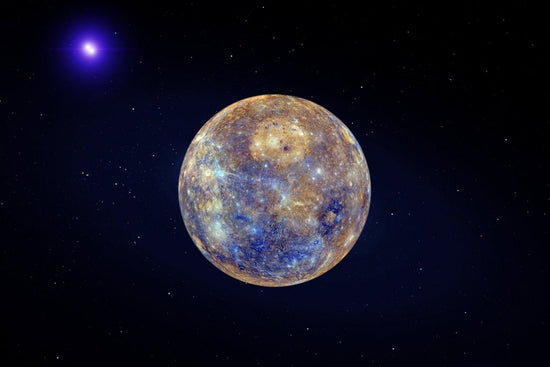Everyday cleaning and personal care products are chock-full of toxins prone to causing harm to both our bodies and our environment—a fact most producers of these products try to conceal. From synthetic fragrance oils to preservatives and dyes, an astonishing number of dangerous compounds hide behind friendly labels that even the conscious consumer might not notice.
Since they’re considered “trade secrets,” beauty and home goods companies are not required to disclose a product’s ingredients on the label, which makes it challenging to avoid unwanted exposure to potential allergens, endocrine disruptors, or other damaging ingredients.
Our bodies are made of sensitive organs that absorb the chemicals in our environment. Whether you’re inhaling the scent of perfume, spraying down the counters, or applying moisturizer to your skin, it’s important to be aware of what you’re inviting into your body. As an all-natural home and body care company, health is one of our top priorities—that’s why we find it particularly important to provide accessible information surrounding the dangerous ingredients most widely used in the beauty and cleaning industries.
We’ve already explored the myriad dangers of synthetic fragrances in detail; now, we’ve compiled a short reference guide to these and several of the other most toxic ingredients you should be avoiding in your home and body products. Below, we explain how each ingredient is most often labeled, what damage they can cause to your body and environment, how you can make easy switches to healthy alternatives, and what resources exist to help you learn more.
Much of our data in this article is pulled from databases created by the Environmental Working Group (EWG), a community of scientists, lawyers, policy experts, community and data experts, and advocates dedicated to advancing environmental health for all. More on their work here.
Header image by Noah Usry on Unsplash.

Fragrance (Parfum)
What it’s called: Fragrance, parfum, aroma
What it is: An umbrella term for over 3,100 synthetic chemicals typically derived from petroleum or coal tar that are used to manufacture scents.
What it does: According to the EWG, synthetic fragrance compounds can disrupt the endocrine (hormone) and reproductive systems and cause dermatitis, allergic reactions, headaches, or respiratory irritation. Some chemicals, like styrene, are even linked to cancer.
Where you’ll find it: Scented and “unscented” products alike, including perfumes, soaps, incense, hair products, deodorants, aftershave, astringents, facial cleansers, lotion, sunscreen, makeup, bath salts, laundry detergent, cleaning sprays, wipes, etc.
An easy switch: Essential oil-based, all-natural products; fragrance-free products
Artificial Colors & Dyes
What it’s called: p-Phenylenediamine, CI + number (e.g. CI 42090), D&C + number (e.g. D&C Yellow No. 11), FD&C + number (e.g. FD&C Yellow No. 6), color + number (e.g. Blue 4)
What it is: Compounds derived from petroleum or coal tar used to add color to products.
What it does: Artificial colors and dyes frequently contain heavy metal toxins and human carcinogens. According to the EWG, many of these chemicals can be toxic to the brain, disrupt the endocrine system, or cause skin irritation. Some chemicals, like p-Phenylenediamine (predominantly used for hair dye), may increase risk of cancer. They cause complications for fish and global food webs as well.
Where you’ll find it: Hair dye, shampoo and conditioner, makeup, mouthwash, fragrances, nail polish, soaps, all-purpose cleaners, liquid laundry detergents, and other cosmetic products
An easy switch: Mineral-derived colorants (like lab-grown* micas or natural clays and oxides)
*We use lab-grown micas so as not to contribute to the unregulated system of mica mining that relies on extremely low-paid child labor in dangerous conditions hazardous to any human’s health. Lab-grown micas may be non-organic, but they are nature-identical.
Formaldehyde
What it’s called: Formaldehyde, formalin, formic aldehyde, methanal, methyl aldehyde, methylene glycol, oxomethane, oxymethylene, paraformaldehyde
Ingredients that form or release formaldehyde: DMDM hydantoin, diazolidinyl urea, glyoxal, imidazolidinyl urea, methenamine, polyoxymethylene urea, quaternium-15, sodium hydroxymethylglycinate, 2-bromo-2-nitropropane-1,3-diol, 5-bromo-5-nitro-1,3 dioxane
What it is: A colorless chemical “used as a preservative to prolong shelf life and prevent bacterial contamination.”
What it does: Formaldehyde is a known carcinogen directly linked to cancer. It can cause allergic reactions or irritation to the skin and lungs as well.
Where you’ll find it: Nail polish and related products, foundation and blush, powders and setting sprays, moisturizers, hair soaps and styling products, hand and body soaps, air fresheners, fragranced products
An easy switch: Our go-to is Leucidal, a natural radish root ferment. Other options include sorbic acid, potassium sorbate, and sodium sorbate.
Parabens
What it’s called: Butylparaben, ethylparaben, isobutylparaben, isopropylparaben, methylparaben, propylparaben, 4-hydroxybenzoic acid, ingredients ending in -paraben
What it is: A group of compounds used as preservatives in cosmetics.
What it does: According to the EWG, “parabens mimic estrogen and can act as potential hormone (endocrine) system disruptors,” which can affect fertility and reproductive function.
Where you’ll find it: Moisturizers and lotions, makeup, hair soaps and styling products, face and body cleansers, sunscreen, nail polish, toothpaste and mouthwash
An easy switch: Citric acid, hydantoin, potassium sorbate, sorbic acid
Petroleum, Mineral Oil, and Petroleum-Based Ingredients
What it’s called: Petroleum, petrolatum, petroleum or mineral jelly, liquid paraffin, paraffin or mineral oil
Other petroleum-based ingredients: Benzene, butanol and “butyl” ingredients, DEA ingredients, ethanolamine (MEA), EDTA, fragrance oils (parfum), methanol, naphtha, parabens, phthalates, polyethylene glycol (PEG), “propyl” ingredients, toluene
What it is: Substances that are derived from crude oil frequently used to hydrate the skin. Petroleum by-products have a wide range of uses in cleaning and beauty products as well. They are also used in cleaning products to cut and dissolve grease and grime.
What it does: While petroleum ingredients are used to moisturize, what they’re really doing is creating a waterproof barrier over the skin that can clog pores, cause irritation, or otherwise negatively impact the skin microbiome. Some of these ingredients (like synthetic fragrance oils) can also be hormone-disruptors. Petroleum and petroleum distillates also show moderate ties to cancer. Petroleum products bioaccumulate, meaning the more exposure we get, the more these chemicals build up in our bodies. Moreover, these ingredients are not sustainable options as they are derived from a non-renewable resource.
Where you’ll find it: Moisturizers and lotions, lip balms, Vaseline, deodorants, sunscreen, soaps, hair products, makeup and other cosmetics, degreasers, solvents, stainless steel polish
An easy switch: We use moisturizing agents like coconut oil, cocoa butter, shea butter, grape seed oil, rice bran oil, and vitamin E in our vegan lip balms, salves, and facial serum. For cutting grease, try dissolving a bar of Canary Clean soap into a spray bottle with water, or create your own blend of vinegar and essential oils. For fragrance, try essential oils.
Phthalates
What it’s called: Phthalate, butyl benzyl phthalate (BBP) dibutyl phthalate (DBP), diethyl phthalate (DEP), DEHP, dimethyl phthalate (DMP), fragrance
What it is: According to the CDC, “phthalates are a group of chemicals used to make plastics more durable.” The FDA writes that phthalates, known as plasticizers, “function as solvents and stabilizers” in fragrance compounds and other cosmetic products.
What it does: Phthalates can be absorbed through the skin. Some negatively impact reproductive or endocrine function. They can also create developmental toxicity.
Where you’ll find it: Nail polish, aftershave, moisturizers, hair soaps and styling products, body soaps, dish soaps, air fresheners, cleaning products, softeners, solvents, fragrances, PVC
An easy switch: Essential oils, all-natural cleansers and moisturizers, explicitly stated phthalate-free products
Sulfates, 1,4-Dioxane, and Ethoxylated Ingredients
What it’s called: Sodium lauryl sulfate (SLS), sodium laureth sulfate (SLES), polyethylene glycol (PEG), polypropylene glycol (PPG), polysorbate 20, ceteareth-20, steareth-20, glyceryl stearate SE, “-eth-” ingredients, “-oxynol-” ingredients
What it is: Ethoxylated ingredients are chemical compounds such as fatty acids or alcohols that have undergone an ethoxylation process whereby ethylene oxide has been added into their mix. This creates surfactants (like detergents) that can release trapped dirt and grime, make substances more soluble, or allow for more even dispersibility.
What it does: Ethoxylation produces a byproduct 1,4-dioxane, which is likely carcinogenic to humans. The Sierra Club writes that this synthetic chemical is linked to liver and kidney damage as well as cancer. In 2017, the EWG found that at least 8,000 skincare products may be contaminated with it!
Where you’ll find it: Skincare products, hair soaps and relaxers, liquid soap, bubble bath, dish soap, laundry detergent, dyes, greases, waxes, varnishes, paint stripers
An easy switch: All-natural soaps and cleansers

Other Toxic Ingredients to Avoid
Ammonia; Benzophene or Benzophenone; BHA & BHT; Chlorine; DEA ingredients (like cocamidopropyl betaine or cocamide DEA); Hydroquinone; Hydroxypropyl methylcellulose; Methylchloroisothiazolinone, Methylisothiazolinone, and Benzisothiazolinone; PFAS; Phenoxyethanol; Polyacrylamides; Polysorbate-20; Propylene or Dipropylene Glycol; Siloxane; and Triclosan.
Resource Library
One rule of thumb for avoiding toxins in home and body products is to exclusively buy from companies that provide a full list of their products’ ingredients on the labels, rather than just the active ones. It can also be helpful to verify a product’s ingredients with the Environmental Working Group (EWG)’s Skin Deep Cosmetic Database to understand the chemicals being used and their associated risks.
Below are a few books and online resources for learning more about navigating naturally through a toxic world.
- The Case Against Fragrance by Kate Grenville. This book combines the author's personal journey with careful research into the science of scent. Grenville teaches us about the potential health risks of fragrance ingredients while uncovering industry secrets.
- EWG’s Skin Deep Cosmetic Database. This database put together by the Environmental Working Group allows you to see the toxicity levels of common beauty products. It scans the ingredient list and shows which ingredients are the most hazardous.
- EWG's Toxic Twelve. This provides information compiled by the Environmental Working Group about the twelve most dangerous chemicals to avoid in home and body products.
- The Campaign for Safe Cosmetics. A project of Breast Cancer Prevention Partners, this site is a great resource for educational information. They're working hard to ban hazardous ingredients from use in cosmetics and increase transparency in the industry.
- The Secret Scents Report by Women's Voices for The Earth. Download this report to learn more about how hidden fragrance allergens harm public health.
From Sea Witch Botanicals:





